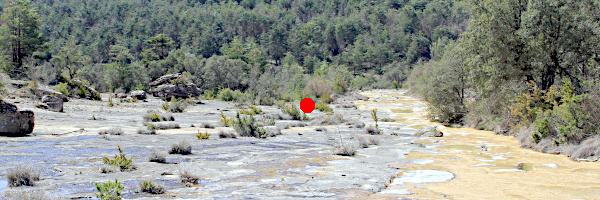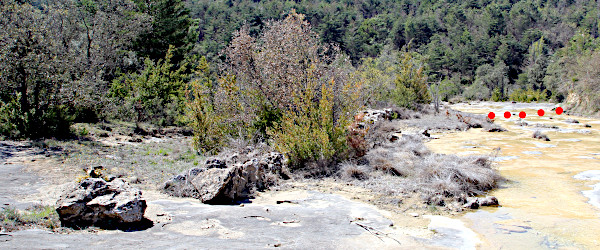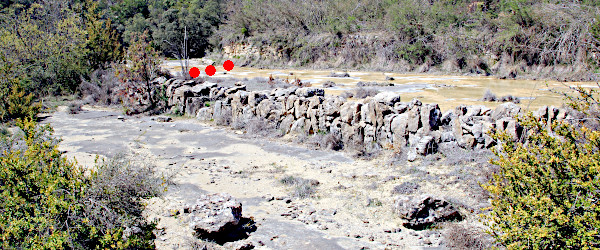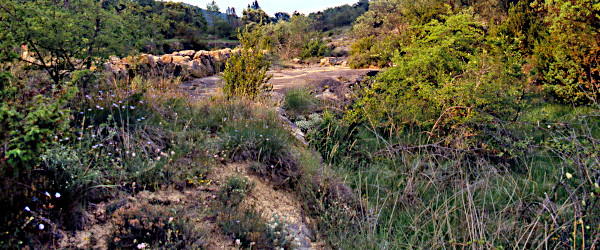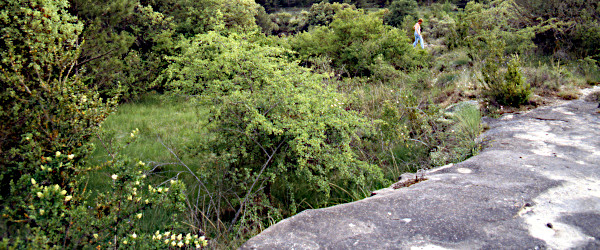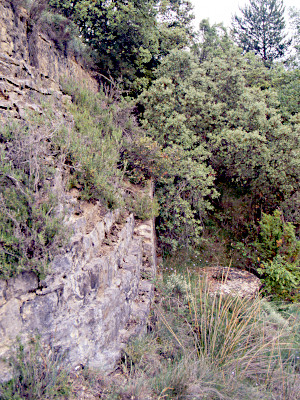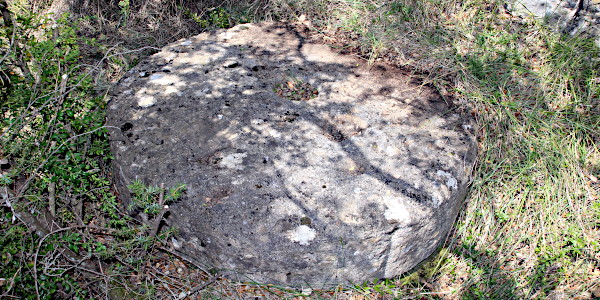Path: Introduction -
Visit the mills; catalogue - Caballera

Mills in Altoaragón - harinero
Caballera

Caballera is a village in the Sierra de Campanúe not far from Santa Liestra. The mill is near the confluence of the and and is in our opinion best reached
from , which is situated on the road between Tierrantona and Graus.
From Troncedo it is a very pleasant walk of about 5.5–6 km.
Try to find a GR-1 signpost in the village center of Troncedo. Follow the path to the north-east towards
Formigales. You'll walk on an old cabañera and after a bit more than 1 km reach a small pond fed by a
well. Straight on; do not take the track which emerges from the right. A bit more than 2 km away from the pond
you'll reach a branch to the right (and South).
Follow this sand road and after quite some time you'll see the stony flats in the
valley at your right side. Work your way down from the curve in the road at about 2.5 km from the
branch.
Visited: 03.vi.2003, 15.iv.2017
